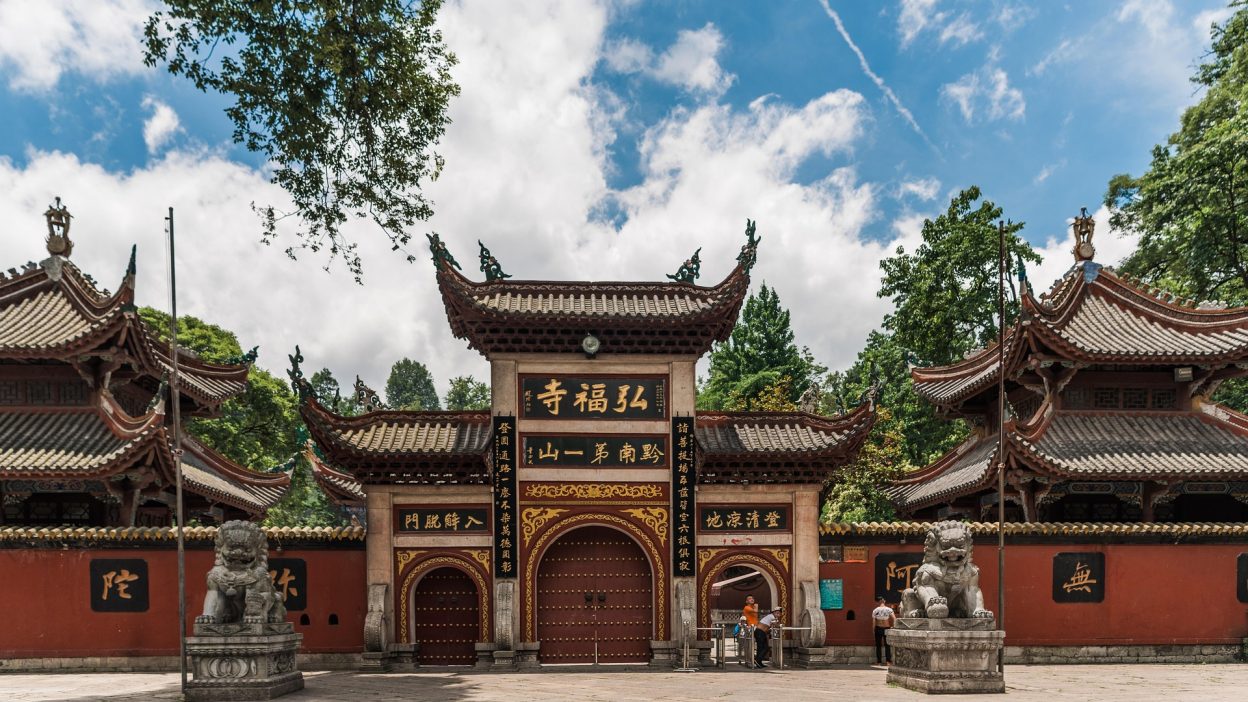Uncovering The Hidden Truths And Lessons We Still Haven’t Learned
The 1973 Luhuo earthquake was a devastating event that shook not only the land but the entire region’s sense of security. The earthquake, with a magnitude of 7.4, struck the Luhuo region in southwestern China, causing widespread destruction. This seismic disaster not only resulted in significant loss of life but also exposed the vulnerabilities in the region’s infrastructure and disaster preparedness systems. The impact of the earthquake stretched far beyond the immediate death toll, affecting the local economy and disrupting communities that were ill-prepared for such an event.
The aftershocks and damage were felt for weeks, and recovery efforts were hindered by the lack of proper planning and resources. The destruction of homes, roads, and businesses left many without shelter or means to survive. This disaster became a wake-up call for the need for stronger infrastructure and better emergency response mechanisms, a lesson that China would carry forward as the years went by.
The Untold Truth Behind the 1973 Luhuo Earthquake Disaster
One of the most troubling aspects of the Luhuo earthquake was the government’s delayed response, which resulted in many avoidable casualties. The local authorities were slow to mobilise resources and provide relief, which worsened the situation in the immediate aftermath. People who were already suffering from injuries and trauma had to wait longer than necessary for help to arrive. Many survivors were left without medical attention or access to basic necessities, exacerbating the human cost of the disaster.
Additionally, there were significant economic consequences of the earthquake that have been largely overlooked. The destruction of agricultural land, infrastructure, and industries left the region struggling for years to recover. The people of Luhuo not only faced the immediate physical impact of the earthquake but also had to endure long-term economic hardship. The true extent of the damage went beyond the official figures, with many lives still affected by the aftershocks of the disaster.
Shattering Lives: The Hidden Consequences of the 1973 Luhuo Earthquake
- Long-Term Displacement: Following the earthquake, many people were forced to flee their homes due to the destruction and instability of the region. Entire communities were displaced, leaving families to live in makeshift shelters for extended periods of time. The emotional toll on survivors, who lost their homes and communities, was immense, and many never returned to their original homes due to the ongoing risks of aftershocks.
- Infrastructural Decay: The earthquake exposed serious weaknesses in the region’s infrastructure. Roads, bridges, and buildings were either severely damaged or completely destroyed, leaving the area isolated from necessary supplies and aid. Rebuilding efforts were slow, and in some cases, the reconstruction was inadequate, leaving many areas still struggling to regain basic infrastructure even years after the disaster.
- Social Impact: The earthquake also had a profound social impact on the community. Many families lost loved ones, and entire villages were wiped out. The psychological toll on survivors was immense, with many experiencing trauma and grief for years after the event. Social bonds were weakened, and the community was left fractured in the wake of the disaster.
Why the 1973 Luhuo Earthquake Was More Destructive Than We Thought
The true scale of the Luhuo earthquake was not fully understood at the time, and even today, its impact is often downplayed. While the immediate destruction was visible, the long-term effects of the earthquake—on the community, economy, and infrastructure—were far more destructive than initially reported. The death toll, for example, was higher than the official numbers suggested, as many deaths went unreported or were lost in the chaos of the disaster.
Additionally, the region’s vulnerability to earthquakes was underestimated. The lack of seismic preparedness and the poor quality of construction in Luhuo contributed to the high number of casualties and the extensive damage. The earthquake exposed the serious flaws in China’s disaster management systems at the time and revealed the critical need for better preparedness and stronger building codes.
The Aftermath of the 1973 Luhuo Earthquake: Is Our Response Enough?
Despite the magnitude of the Luhuo earthquake, the response from both local and national authorities was insufficient to meet the needs of those affected. Relief efforts were slow, and there was a lack of coordination between government agencies. The delay in aid meant that many survivors did not receive the help they needed in a timely manner. Furthermore, the rebuilding process was marred by inefficiency and corruption, with resources often misallocated or wasted.
There were also issues with preparedness for future earthquakes. The Luhuo earthquake highlighted the need for more robust disaster response systems and improved training for emergency personnel. While China has since made strides in improving its disaster management strategies, the response to Luhuo was a stark reminder of the importance of being prepared for such catastrophic events.
Could We Have Prevented the 1973 Luhuo Earthquake? The Shocking Facts
The Luhuo earthquake, though devastating, could have been less catastrophic if certain measures had been taken. One of the primary factors that contributed to the severity of the disaster was the lack of building regulations. Many of the structures in the region were not built to withstand such powerful earthquakes, which led to the widespread collapse of buildings and infrastructure.
- Building Failures: The buildings in Luhuo were constructed with poor materials and inadequate seismic resistance, which led to their failure during the quake. Had stronger building codes and better construction practices been in place, the damage could have been significantly reduced.
- Seismic Warnings: While earthquakes cannot always be predicted, the area was known to be seismically active, and there were signs of increased seismic activity before the earthquake. With better monitoring and early warning systems, authorities could have evacuated at-risk populations and taken precautions to minimise the impact of the disaster.
- Could Early Action Have Saved Lives?: Had the government and local authorities taken more immediate action, including better evacuation plans and faster mobilisation of aid, many of the deaths could have been avoided. The slow response time was a critical factor in the high casualty rate, and earlier intervention could have made a significant difference.
When Earthquake Strikes: How the 1973 Luhuo Earthquake Revealed Our Vulnerabilities
The Luhuo earthquake exposed several vulnerabilities that China, and the world, would need to address in order to better handle future disasters.
- Lack of Preparedness: The region’s lack of preparedness for a disaster of this magnitude led to a slow and inefficient response. Many people were left stranded or without shelter for days, which could have been avoided with better planning.
- Weak Regulations: The building codes at the time were not robust enough to withstand such a strong earthquake. As a result, many buildings collapsed, and the economic impact of the disaster was exacerbated. In the years following Luhuo, China implemented stronger building standards to mitigate the effects of future quakes.
- The Human Factor: Complacency in the face of disaster contributed to the high death toll. Many people were caught off guard, and the lack of effective communication and warning systems meant that those who survived the initial tremor were often left vulnerable to aftershocks and the failure of infrastructure.
The 1973 Luhuo Catastrophe: What the Media Didn’t Tell You
The media coverage of the Luhuo earthquake, while extensive, failed to capture the full extent of the disaster. The death toll was underreported, and the media did not fully highlight the slow response and mismanagement by authorities. The government’s role in downplaying the severity of the event was not fully covered, leading to a skewed portrayal of the disaster’s aftermath.
- Underreported Death Toll: The official numbers did not accurately reflect the full number of casualties, as many deaths went unreported in the confusion following the earthquake. The true impact of the disaster was much greater than what was initially reported.
- Media Manipulation: The coverage of the earthquake often presented a more optimistic view of the situation than what was happening on the ground. In some cases, the media downplayed the suffering of the survivors, focusing more on recovery efforts that were, in reality, struggling.
- Government Spin: The Chinese government controlled the narrative around the earthquake, focusing on the recovery efforts and downplaying the failures in disaster response. This limited the public’s understanding of the true scope of the tragedy and hindered the ability to learn from the event.
Conclusion: Luhuo 1973: A Lesson We Shouldn’t Forget
The 1973 Luhuo earthquake stands as a stark reminder of the vulnerability of communities to natural disasters. The human toll, economic damage, and long-term social impacts are a testament to the importance of being prepared for such catastrophic events. While China has made significant improvements in disaster response since then, the lessons of Luhuo remain relevant today. We must learn from the past to ensure that we are better equipped for the inevitable disasters of the future.
5 Short FAQs
- What caused the 1973 Luhuo earthquake?
- The earthquake was caused by tectonic plate movements along a fault line in the region, a common cause of earthquakes in seismically active areas like Luhuo.
- How many people were affected by the 1973 Luhuo earthquake?
- The earthquake affected hundreds of thousands, with thousands of casualties and many more displaced due to the destruction of homes and infrastructure.
- What were the main challenges in the aftermath of the Luhuo earthquake?
- The primary challenges were slow response times, lack of infrastructure, and inadequate building codes, which worsened the disaster’s impact.
- How did the Chinese government respond to the Luhuo earthquake?
- The government’s response was slow, with delays in relief efforts and mismanagement of resources, which contributed to the disaster’s prolonged aftermath.
- What lessons were learned from the 1973 Luhuo earthquake for future earthquake preparedness?
- Key lessons included the importance of robust building regulations, faster response times, and better preparedness for earthquakes in vulnerable regions.
References:
1973 Luhuo Earthquake – Wikipedia
The Post-seismic Slip of the 1973 M7.6 Earthquake on the Luhuo Segment of the Xianshuihe Fault Zone, Sichuan, China
Rupture Complexity of the 1970 Tonghai and 1973 Luhuo Earthquakes, China, from P-wave Inversion, and Relationship to Surface Faulting




